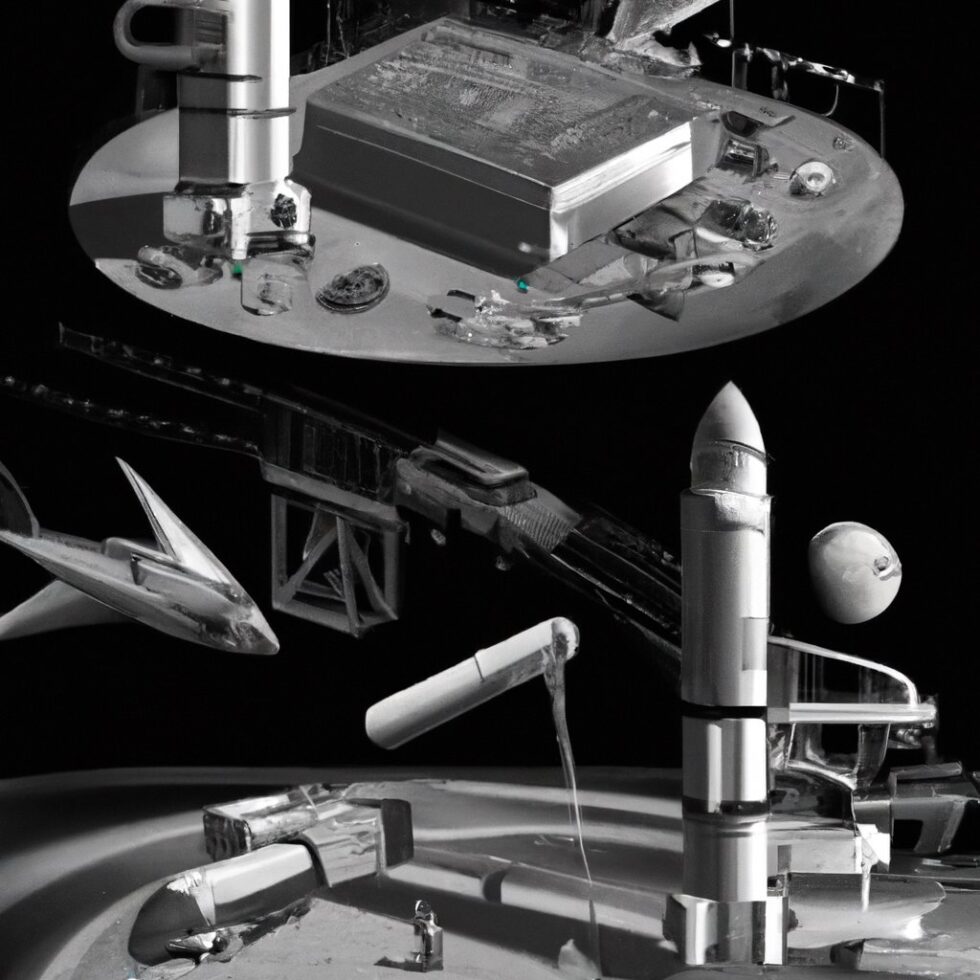
For decades, space headlines have focused on rockets lifting off, telescopes unfolding, and landers touching down. Those feats still matter, but a quieter shift is underway. As launch costs fall and spacecraft multiply, the most important work is moving from “how do we get there?” to “how do we operate once we’re there?” The answer is emerging as a new utility layer for space—a set of shared services that make routine operations economical, safe, and scalable.
Utilities on Earth are boring by design: power grids, gas stations, tugboats, traffic rules, and broadband. Space is building similar essentials. Think propellant depots that let satellites refuel, robotic tugs that reposition or retire old spacecraft, repair and upgrade services, optical data backbones that move terabytes quickly, and reliable navigation and timekeeping for the Earth–Moon neighborhood. None of these make dramatic launch footage. All of them make everything else possible.
This article explores that utility layer: what’s being built, why it matters, the technologies that enable it, and how it changes the economics of space. We’ll keep the language clear and the examples concrete, so it’s easy to see where things stand—and where they’re likely headed over the next few years.
Why Space Needs a Utility Layer
Launch used to be the main friction. Price and risk squeezed every mission into a one-shot, custom package. But with reusable launchers and mass-produced satellites, space is starting to look like a normal industry: smaller margins, faster schedules, and competition on service quality.
In that environment, a “use it and lose it” model breaks. Scrapping a satellite once it runs low on fuel or drifts off station is like junking a truck because its gas tank is empty or the tires wear down. The better model is familiar: refuel, repair, upgrade, tow, and recycle. To do that in orbit, you need standard interfaces, robots that can dock safely with uncooperative objects, precise maps of traffic, and legal guardrails that keep operators accountable.
There’s also simple geometry. The Earth–Moon system is getting crowded. Hundreds of spacecraft will serve Earth, dozens will work in cislunar space, and a growing number will operate at the Moon. The distances, light-time delays, and gravitational quirks make manual control slow and expensive. The utility layer spreads helpful infrastructure across that terrain, so missions can plug in and get on with their job.
Refueling in Orbit: From Tankers to Depots
Every space operator knows fuel equals freedom. It keeps satellites on station, enables orbit changes, and buys time to diagnose faults. Until recently, once a spacecraft launched, its propellant budget was fixed forever. That constraint shaped spacecraft designs and business plans.
Why standard refueling ports are a big deal
On Earth, we don’t redesign a fuel nozzle for every truck. Space needs the same simplicity. That’s the goal behind purpose-built refueling interfaces. A standard port lets a tanker “dock, transfer, and go” without custom tooling or risky gymnastics. It also invites a market: suppliers can build tankers and depots without negotiating bespoke hardware for each customer.
One visible effort is Orbit Fab’s RAFTI, a refueling port meant to be lightweight and easy to integrate. A port like this enables multiple services: in-orbit hydrazine top-ups for small satellites, xenon or krypton for electric thrusters, and eventually cryogenic transfer for deep-space missions. Even if standards compete for a while, shipping with any compatible port is a leap forward compared to “sealed tanks for life.”
Tanker flights and the first refueling customers
Pioneers have already showed the basics. Demonstrations of tankers and docking fixtures have validated navigation, capture, and fluid transfer. While full commercial refueling contracts are still rare, the pieces are lining up: a refueling port design, a small tanker bus, and customers whose remaining asset life is worth more than the price of a top-up. Early adopters are likely Earth observation and communications operators that prize station-keeping and agility.
The cryogenic challenge: Keeping propellant cold
Refueling chemical rockets in space is harder than topping up storable propellants. Cryogenic oxidizers and fuels (like liquid oxygen and liquid methane) boil off without careful thermal management. Doing long-duration storage means controlled venting, active cryocooling, and sun-shielding. None of this is unsolved, but it’s a step beyond what today’s satellites do.
Why push through it? Because cryogenic refueling unlocks high-energy missions. A lunar lander or a tug with a full tank in orbit can move large payloads, deploy swarms, or support surface ops and then come back for more. Instead of building and launching a one-off heavy spacecraft, you refill a tanker and keep it busy. It’s the same logic that made mid-air airplane refueling transformative for aviation.
Robotic Tugs, Repair, and Responsible Disposal
Refueling is just one piece. Orbital tugs and servicing vehicles are already changing how operators manage fleets. These systems dock with existing satellites to provide thrust, station-keeping, or new capabilities. They also offer an exit ramp for aging hardware by towing it to graveyard orbits or controlled reentry.
Life extension has moved from theory to practice
Several missions have proven that docking with unprepared satellites is doable and useful. In geostationary orbit, life-extension vehicles have attached to aging comsats, taken over attitude control, and kept them on station for years. For operators, this squeezes more revenue from expensive assets and creates a buffer while replacements are built.
In low Earth orbit, smaller tugs are emerging. They collect cubesats, shift orbits for rideshare clusters, and host payloads that need occasional repositioning. The flexibility suits constellations that need frequent tweaks without burning through onboard propellant.
Debris capture is getting real
Space debris isn’t just an environmental problem; it’s an operational one. Tracking, avoiding, and worrying about fragments impose costs on everyone. That’s why active debris removal—capturing and deorbiting dead or unstable objects—is finally getting flight time. Companies have demonstrated chase, proximity, and capture techniques using test targets. Others are now flying to inspect legacy upper stages in orbit and practice safe approaches.
In Europe, work is underway on missions that will remove a large piece of debris, proving the model and setting up future contracts. Success here matters beyond safety: it signals a working market for cleaning services, with governments as anchor customers and private operators buying in as norms firm up.
Designing satellites for servicing
Servicing is easiest if future satellites are ready for it. “Design for servicing” is catching on: include a grapple fixture, make some components accessible, and add fiducial markers for computer vision. Small changes up front unlock options later, from re-orbiting to replacing critical parts. Over time, we’ll see service-friendly buses become the default, the way cars standardized on OBD ports and charging connectors.
Navigation, Timing, and Communications in Cislunar Space
Earth has GNSS, fiber backbones, and a world clock. The Moon and cislunar space need similar anchors. Missions today rely on ground tracking and ad hoc relays; that won’t scale as traffic grows. Two big pieces are in motion: a lunar comms-and-navigation overlay and a shared timekeeping approach.
Building the Moon’s “utility grid”
Architectures have been proposed for an interoperable lunar network. The vision is a set of lunar-orbit relay satellites and surface nodes that offer three predictable services: communication, precise navigation, and timing. By buying those services, a rover or lander can skip bulky antennas and rely less on Earth-based tracking.
In parallel, Europe is pursuing a complementary network that could provide coverage for key landing sites, polar routes, and later, cislunar waypoints. The point isn’t to lock anyone into a single vendor; it’s to make sure any mission can “roam” transparently using shared standards.
Lunar LTE and local networks
Short-range and local surface communication will also be vital. Ruggedized LTE/5G testbeds are planned to support high-definition video, telemetry, and control between landers, rovers, and science payloads. If you picture a construction site on the Moon, you can picture why this matters: machines and people need low-latency links to coordinate work, share sensor feeds, and avoid hazards.
Optical Links and the Space Data Backbone
Satellites generate mountains of data, and more is coming from radar constellations, hyperspectral imagers, and lunar missions. Radio links can’t keep up alone. Laser communications are stepping in to move data at fiber-like speeds—within space and down to the ground when weather allows.
Inter-satellite laser links
Laser crosslinks connect satellites directly, hopping data around the planet without touching Earth. They avoid spectrum bottlenecks and reduce latency over long distances. Operators running large constellations have embraced this to route traffic around ground outages, sync timing across the fleet, and stream payload data to a downlink window in clear skies.
Relays and terabit-class downlinks
On the government side, optical relays in geostationary orbit can accept laser uplinks from low orbit and forward them to ground stations. Demonstrations have shown stable links and high throughput. Small satellites have also proven eye-watering downlink speeds from space to Earth in good weather, suggesting a future where a brief pass can empty a sensor’s data vault.
Ground stations and weather
Optical links have a known Achilles’ heel: clouds. Operators solve this with site diversity—placing optical ground stations in multiple climates and switching among them. Hybrid systems pair lasers with radio as a fallback. For the cislunar region, optical relays positioned wisely can offer sunlit paths away from Earth’s weather, then drop data when and where skies are clear.
Autonomy for Rendezvous and Proximity Operations
Approaching, docking, and servicing in space demand precise navigation and quick decisions. The distances and light-time delays in cislunar space make full manual control impractical. Autonomy fills the gap.
Sensors and real-time navigation
Servicing craft use a stack of sensors: star trackers and inertial units for absolute attitude, cameras and lidar for relative navigation, and sometimes radar for longer-range acquisition. Optical pose estimation—figuring out a target’s position and orientation from camera images—is improving rapidly. Fiducial markers help, but even unprepared targets can be tracked using known models and learned features.
Guidance and control with safety baked in
Autonomy isn’t just “fly to target.” It’s a set of safety rules that never yield. No-go cones, approach corridors, speed limits, and automatic retreat on loss of signal are designed into flight software. Think of it as air traffic rules compressed into algorithms that can react in milliseconds. Regulators and insurers will demand transparent safety cases; mission logs and formal verification tools help prove the math matches the behavior.
Verification on the ground, updates on orbit
Spacecraft need ways to upgrade autonomy software as they learn. That calls for modular architectures, sandboxed updates, and exhaustive simulation before pushing changes. Hardware-in-the-loop testbeds let teams rehearse with the real sensor and actuator timing, catching edge cases. Over time, fleets will share “lessons learned” datasets to improve approach strategies and fault handling.
Power and Propulsion: The Enablers Behind the Services
Tugs, depots, and laser relays don’t work without efficient ways to move and power spacecraft. Two trends stand out: electric propulsion for fine control and station-keeping, and nuclear thermal propulsion for high-thrust maneuvers in deep space.
Electric propulsion grows up
Hall-effect thrusters and ion engines have migrated from science missions to mainstream commerce. They sip propellant and provide months of gentle thrust to climb orbits, station-keep, or reshape constellations. Xenon is still the gold standard, but krypton is common and cheaper for some use cases. Iodine is emerging as a compact, storable alternative for small satellites, removing the need for high-pressure tanks.
For the utility layer, electric propulsion is the workhorse. A tug that can precisely nudge a client, hold station while inspecting, and then drift to the next task is all about efficiency. Expect more thruster options tailored to different classes—from shoebox satellites to bus-sized platforms.
Nuclear thermal propulsion for the cislunar highway
To move heavy loads between Earth orbit and the Moon quickly and often, nuclear thermal propulsion is compelling. By heating hydrogen propellant in a reactor, it offers much higher performance than chemical rockets without the slow acceleration of electric engines. Programs are underway to demonstrate the technology in space, with an eye toward reliable, reusable tugs that make Earth–Moon transfers routine.
There are challenges: reactor safety, launch approval, and thermal management. But if the first flights prove reliable, NTP could become the backbone for heavy logistics beyond Earth orbit—hauling propellant, structures, and cargo between depots and destinations, then returning for the next job.
Power systems: lighter, smarter, more resilient
Solar arrays continue to improve in efficiency and packaging, delivering more watts per kilogram. Roll-out arrays and flexible panels make it easier to scale power with mission needs. Batteries are benefiting from better cell chemistry and smarter thermal control. Together, they let service vehicles carry the sensors and compute needed for autonomy while keeping mass in check.
In‑Space Manufacturing and the Return Loop
One reason to build a utility layer is to support work done in orbit and beyond. Manufacturing in microgravity has gradually moved from experiments to commercial prototypes. The promise: unique materials and structures that aren’t possible on Earth, and on-demand production of parts for space infrastructure.
What’s working now
On-orbit printers have produced tools and test parts on the International Space Station. Specialty materials like ZBLAN optical fiber have shown performance advantages when drawn in microgravity. More recently, reentry-capable capsules have returned manufactured items to Earth for analysis and sale, demonstrating a full loop: make, verify, sell, and repeat.
Why make it in space at all?
Microgravity and vacuum offer useful conditions. Crystals can grow larger and more uniform. Fibers can have fewer defects. Thin films can deposit differently. There’s also a “macro” advantage: build large structures without folding them into a rocket fairing. That could matter for antennas, telescopes, and depots—anything that likes being big and lightweight.
The logistics piece: storage, aggregation, and return
Manufacturing at scale requires predictable logistics. Incoming raw materials, storage in orbit, aggregation of finished goods, and routine return flights are all part of the picture. Dedicated reentry vehicles that fly frequently, not just as rare rideshares, will matter. Downmass that can tolerate weather delays and land reliably near processing facilities reduces costs and speeds sales.
Rules, Norms, and Traffic Coordination
As orbits fill up, rules move from abstract policy to day-to-day operations. This isn’t about politics; it’s about shared practices that keep everyone safe and accountable.
Tracking everything, sharing enough
Commercial and government radars and telescopes track objects and predict close approaches. The data is improving in precision and refresh rate. Operators get alerts, maneuver if needed, and report outcomes. Better data-sharing tools reduce false alarms and let small teams react quickly. Independent tracking from multiple providers keeps the ecosystem honest and resilient.
When to deorbit and how fast
Rules are tightening on how quickly satellites must deorbit after their missions end, particularly in low Earth orbit. Shorter deadlines aim to reduce clutter and collision risk. For operators, planning end-of-life maneuvers isn’t optional anymore; it’s part of the business model. This pushes demand for tugs and disposal services and rewards designs that save a little propellant for a reliable final burn.
Protocols for proximity operations
Approaching another spacecraft raises safety concerns, even with good intentions. Clear protocols—announce plans, share timelines, enable a “break-away” channel—build trust. Think of maritime rules for passing and docking, adapted for orbital dynamics. No one wants surprises near their expensive asset. Over time, standardized “right of way” norms for different orbits and activities will reduce friction.
The Economics of Space Utilities
The utility layer shifts risk and rewards in familiar ways. Instead of big one-time bets on bespoke spacecraft, operators can buy reliable services as needed. That moves capital expense into operating expense and smooths cash flow.
Who pays first?
Early customers are those with valuable but stranded assets: aging satellites with years of hardware life but not enough propellant, or mission-critical new satellites that would pay handsomely for an extra few years of performance. Governments are also anchor buyers for debris removal, inspection, and cislunar infrastructure. Their contracts help private providers scale up.
What gets cheaper
Servicing reduces the penalty for design mistakes or component failures. It lets teams iterate faster without baking costly margin into every subsystem. It encourages modularity because upgrades are possible. Over time, insurance costs should reflect lower loss rates for serviceable fleets, further reinforcing the model.
Market structure: many specialists, shared standards
Expect a mix of specialists: refueling providers, tug operators, inspectors, disposal contractors, laser relay networks, and navigation services. The connective tissue is standards—mechanical interfaces, rendezvous protocols, timekeeping, and data formats. When these are healthy, competition shifts to efficiency and reliability, not lock-in.
Practical Steps for Today’s Space Teams
You don’t need to run a depot to benefit from this shift. If you build, operate, or insure spacecraft, there are concrete steps you can take now to lower risk and open doors.
Design for serviceability
- Add a standard refueling port if your mission and propellant type allow.
- Include at least one grapple-friendly fixture and fiducial markers for visual navigation.
- Expose high-failure parts where a future mission could reach them.
- Reserve a little mass and power for service beacons and approach sensors.
Plan end-of-life from day one
- Budget propellant for deorbit or relocation, even if you hope to refuel.
- Publish your end-of-life plan in operator registries and keep it current.
- Choose orbits that simplify disposal and reduce long-lived debris risk.
Use multi-source tracking data
- Subscribe to at least two independent space traffic services for redundancy.
- Automate conjunction screening and escalation, with human-in-the-loop for maneuvers.
- Keep maneuver histories clean and accessible to support insurance and audits.
Architect for autonomy updates
- Design flight software with module boundaries so proximity ops can be updated safely.
- Build a high-fidelity simulator early, including camera-in-the-loop testing.
- Log everything. Flight data from routine ops is gold for training and validation.
What Could Go Wrong—and How to Manage It
Space utilities will not roll out without hiccups. Three risks stand out, and each has a mitigation path.
Boil-off and leak concerns
Cryogenic depots risk losing propellant to heat and leaks. Redundant sensors, passive sun-shields, and active cooling help, but complexity adds failure modes. The mitigation is staged rollouts: start with storable propellant services, gather runtime data, and scale to cryogenics with well-tested hardware. Use uncrewed tanker flights to validate transfer procedures before committing payloads.
Rendezvous mishaps
Approach and docking carry collision risk. That risk drops with conservative approach profiles, hard fail-safe distances, and test campaigns that simulate the target’s motion. Regulators can encourage publication of intent and shared “keep-out” geometries, so everyone understands the plan and can monitor its execution.
Market fragmentation
If every provider invents a new port or protocol, the utility layer won’t cohere. Industry groups, agencies, and insurers can push convergence by preferring interoperable designs. Buyers can help by asking for standards in RFPs and rewarding vendors who adopt them.
Why This Matters Beyond Space
The ideas behind space utilities echo patterns in other industries. Hybrid cloud became the backbone of software once teams could rent reliable building blocks. Renewable energy scaled after markets valued grid services like storage and peak balancing. Logistics transformed when ports standardized containers. Space is entering the same phase: standard service blocks that make complex operations routine.
What changes as this layer matures?
- Satellites become assets that can be maintained, not consumables to be thrown away.
- Lunar missions lean on shared infrastructure instead of custom comms and nav.
- Data moves faster and more securely through space before touching Earth.
- Traffic becomes manageable through norms and shared situational awareness.
- New businesses—inspection-as-a-service, depot management, on-orbit assembly—become normal.
Five Scenes From the Near Future
It helps to picture how a mature utility layer feels in daily operations. Here are five short scenarios that are plausible within the decade:
1) A GEO satellite books a top-up
An operator sees station-keeping fuel dipping below a threshold with three years of payload life left. They schedule a refuel with a servicing provider. The tug arrives, docks at a standard port, transfers propellant, and departs. The operator extends service contracts with customers without a satellite replacement.
2) A cubesat cluster hitches a ride
A university constellation needs to change inclination to target a new science region. A small tug collects the group during a planned maintenance window, performs a two-week transfer using electric propulsion, and redeploys them. The tug returns to a depot to await the next gig.
3) A lunar rover “roams” onto a partner network
During a polar night, a rover loses line-of-sight to its lander. It connects to a passing lunar relay, gets a timing fix and a trickle of power, then pings a nearby base station at the crater’s rim. Operators on Earth route commands through whichever link is open, paying a metered rate to the shared network.
4) A debris removal crew clears a risk
A derelict upper stage has an elevated collision probability with an active satellite. The removal provider publishes an approach notice, performs an inspection pass, and then captures the target with an arm designed for unknown geometries. The combined stack is deorbited over an ocean corridor. Insurers adjust premiums for that orbital shell, reflecting lower modeled risk.
5) A materials startup ships its third batch
A small manufacturing platform in low Earth orbit completes a production run of specialty fibers. It transfers canisters to a reentry capsule. The capsule lands in a desert zone and is retrieved within hours. Quality control on the ground clears most of the batch for sale, and the next run starts with parameters tweaked based on returned telemetry.
What to Watch Next
As the utility layer solidifies, a few milestones will signal that it’s moving from pilot projects to plumbing:
- Multiple satellites launching with native refueling ports as a default feature.
- Two or more servicing providers operating concurrently, creating a real market.
- First routine commercial debris removal with a published service catalog.
- Operational lunar comms-and-navigation nodes serving multiple customers.
- Laser relay networks committing to multi-year service-level agreements.
- Autonomous rendezvous update frameworks audited and approved by insurers.
None of these requires a scientific breakthrough. They require engineering discipline, predictable demand, and policy that encourages shared infrastructure over bespoke systems.
Conclusion
Space has always been about daring. The utility layer is about diligence. It’s the work of making refueling an appointment, docking a checklist, navigation a subscription, and traffic control a shared habit. That’s not as flashy as a new rocket, but it’s the difference between a stunt and a system.
When you can refuel, repair, and reroute in orbit, mission designers get bolder. When lasers can move data at fiber speeds, imagers get hungrier. When a lunar network offers timing and comms, builders can plan surface work with confidence. And when debris is actively removed and end-of-life disposals are baked in, everyone breathes easier.
The shift is underway. You can already see the outlines: the first tugs, the first lunar relays, the first laser backbones, the first return capsules loaded with products. Thread them together and you get a picture that looks familiar from Earth—utilities that quietly power everything else.
Summary:
- Space is building a utility layer: refueling, tugs, repair, traffic rules, and high-speed data links.
- Standard refueling ports and tankers turn fixed-lifetime satellites into serviceable assets.
- Robotic servicing and debris removal are moving from demos to markets, with design-for-servicing becoming normal.
- Lunar comms-and-navigation networks will let missions “roam” in cislunar space with shared timing and coverage.
- Laser communications form a data backbone with inter-satellite links and high-rate downlinks to diverse ground sites.
- Autonomy for rendezvous uses cameras, lidar, and strict safety rules to dock and service reliably.
- Electric propulsion handles fine maneuvers; nuclear thermal propulsion could power heavy cislunar logistics.
- In-space manufacturing is maturing, with reentry capsules closing the loop from production to sale.
- Stronger norms on tracking, deorbit timelines, and proximity protocols reduce risk and support insurance.
- Teams can act now: design for serviceability, plan end-of-life early, use multi-source tracking, and architect for software updates.





